ALLERGY TO DUST
2014, INSTALLATION
TEXTILE, EMBROIDERY, THREADS, VIDEO, GRAPHIC WORKS
2016 — GROUP SHOW "Borsch and Champaign", Moscow Museum of Modern Art, Moscow
2014 — SOLO SHOW “ALLERGY TO DUST”, MARINA GISICH GALLERY, ST.PETERSBURG, RUSSIA
2014 — GROUP SHOW “OTHER CAPITAL”, MUSEUM OF MOSCOW, MOSCOW
2014 — GROUP SHOW “CONTEMPORARY DRAWING”, STATE RUSSIAN MUSEUM, ST.PETERSBURG, RUSSIA
In “Allergy to Dust” Tanya Akhmetgalieva presents novel video pieces and textile motifs, distinctively employing her recognizable embroidery technique. A contemplative exploration of the contemporary era unfolds, accompanied by an attempt to momentarily disconnect from the ceaseless torrent of information inundating daily life. However, the question remains: can such detachment truly be achieved?
The erratic power supply, the intermittent and flickering illumination, the hanging threads resembling wires, and the persistently “red hot” telephones continually intrude upon the viewer’s personal sphere. Within the age of information conflicts, sounds and signals often find their mark, distorting reality to the point where deciphering the authentic meaning of received information becomes an arduous task.
For Akhmetgalieva, the lightbulb takes on a symbolic resonance of vivid hope intertwined with solitude. The chandelier that illuminates our existence, along with the “tele_phone” and “tele_vision” (derived from the Greek root τῆλε, meaning “far away”), shed light on the occurrences within it. Haruki Murakami’s novel “1Q84” alludes to the telephone functioning as a potential time bomb, challenging to manage amidst the information deluge.
The symbols of Soviet communication, embodied by Akhmetgalieva’s portrayal of the “red phone,” evoke memories of the “Washington-Moscow hotline” initiated in 1963 after the Cuban Missile Crisis. This hotline facilitated emergency communication between adversaries during the Cold War. The video featuring fencers captures attention pixel by pixel. Gradually, the informational “dust” engulfing us from all directions fills the recesses of our minds, leaving little space for introspection or detachment. We find ourselves losing command over the supply of mental oxygen. An allegorical allergic reaction accompanies a journey into the past, where the Soviet telephones and televisions that envelop us evoke a desire to sneeze…
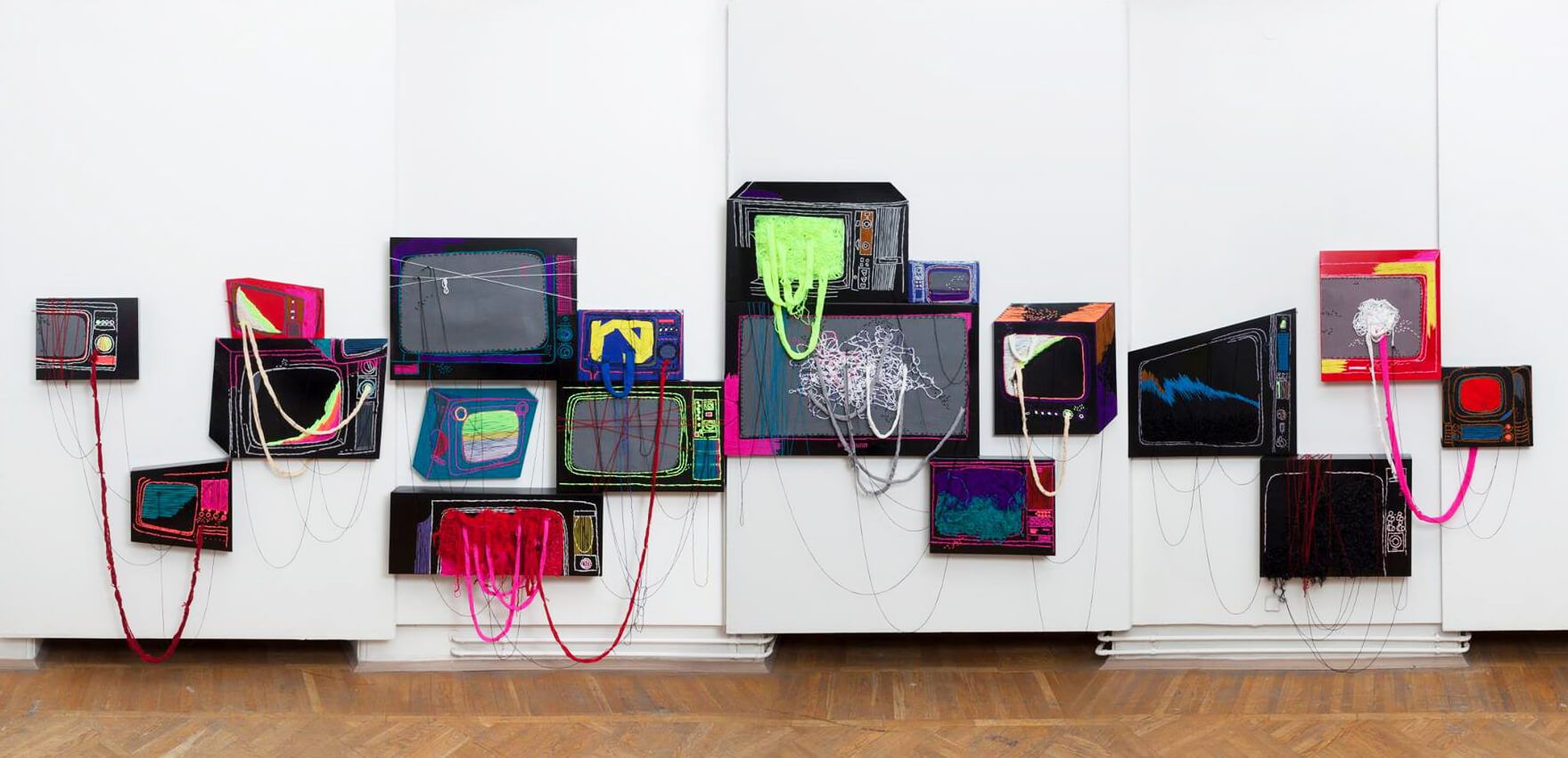
Allergy to dust #2, 2013, 200 x 800 cm, textiles, sewing, threads

Allergy to dust #1, 2013, 90 x 780 cm, textiles, sewing, threads

INTERFERENCE
2017, video installation 37 sec
Video & sound: Tanya Akhmetgalieva
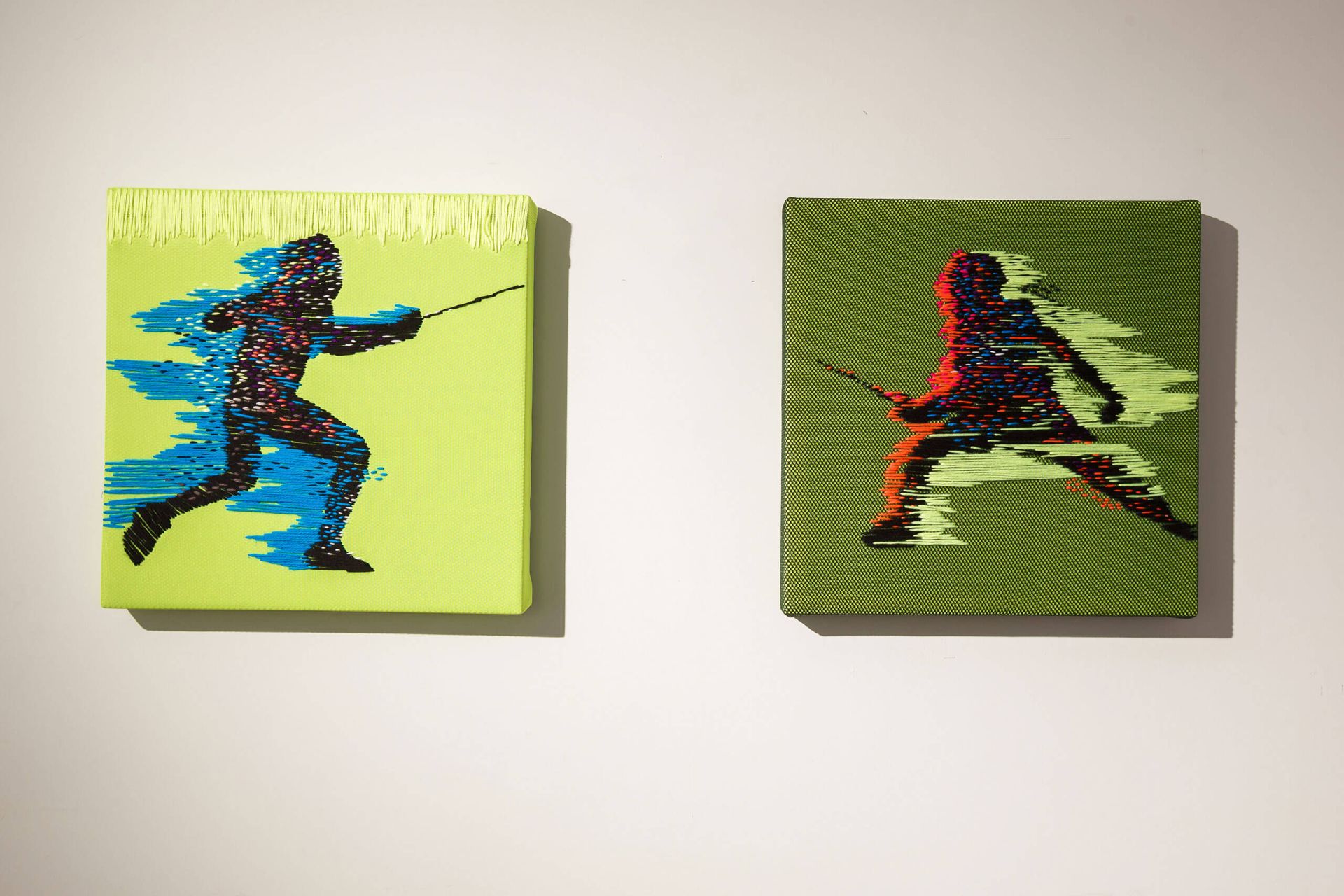
Interference, 2014, 50 x 50 cm, 50 x 50 cm, textiles, sewing, threads
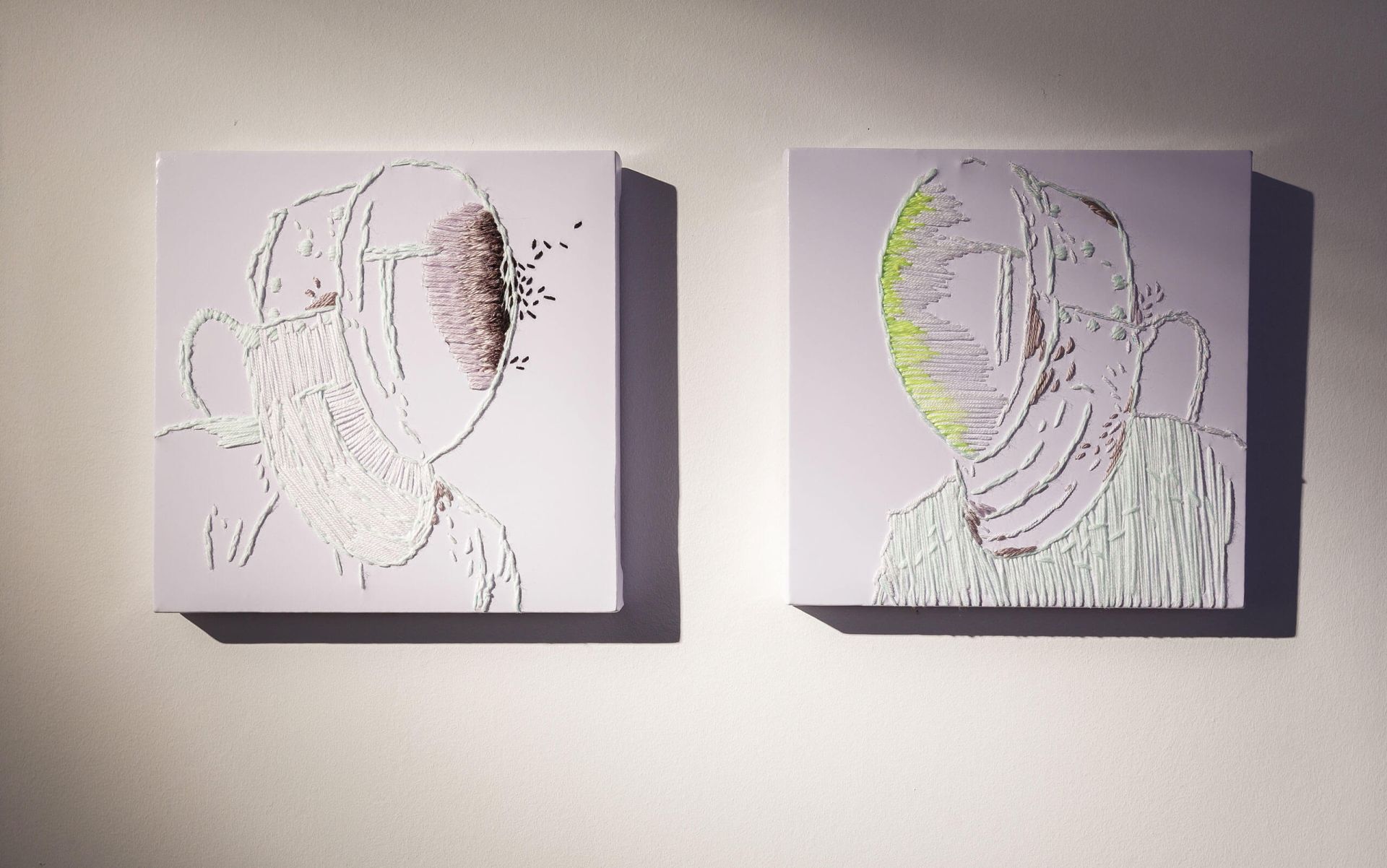
Mediavirus, 2014, 50 x 50 cm, 50 x 50 cm, textiles, sewing, threads
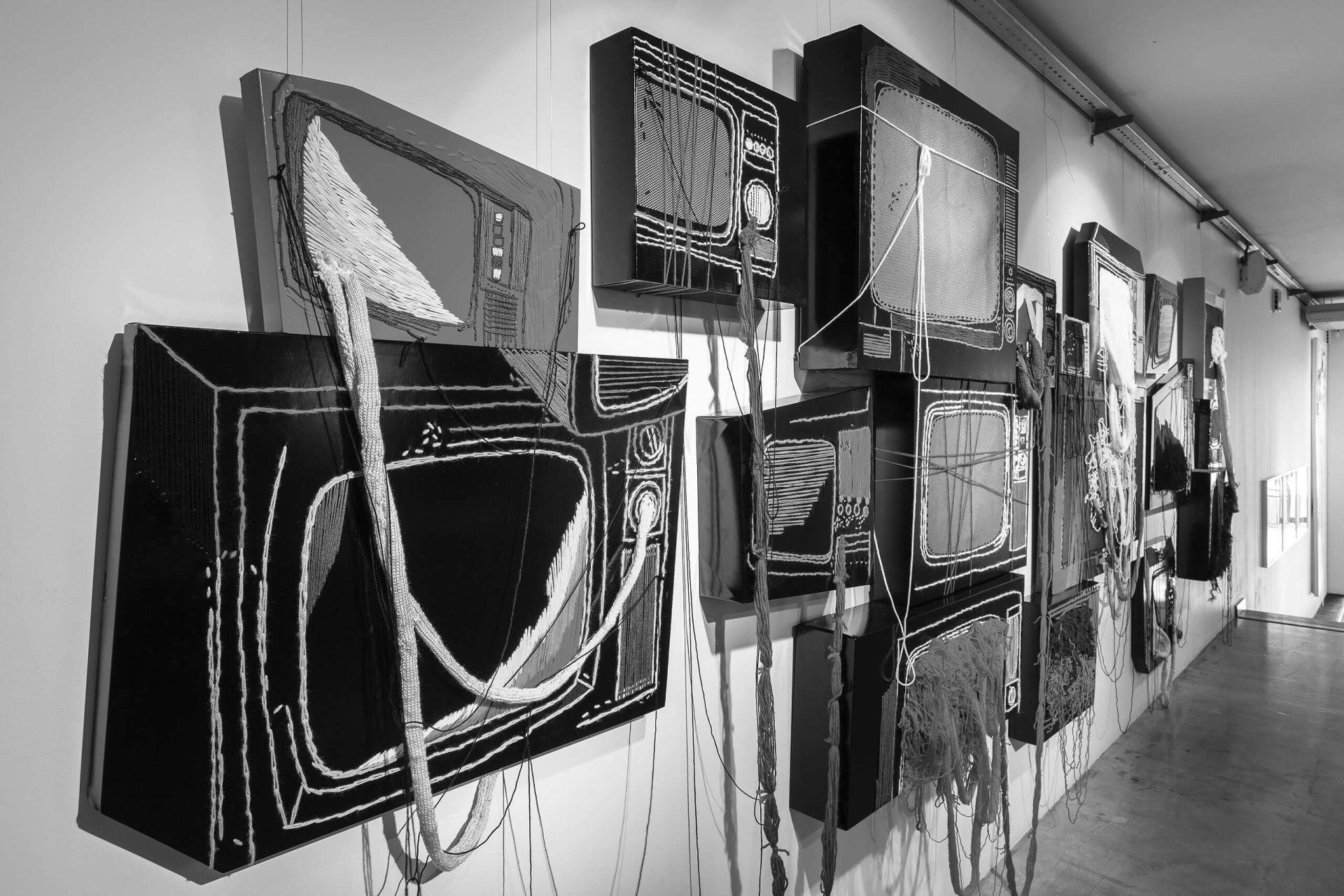
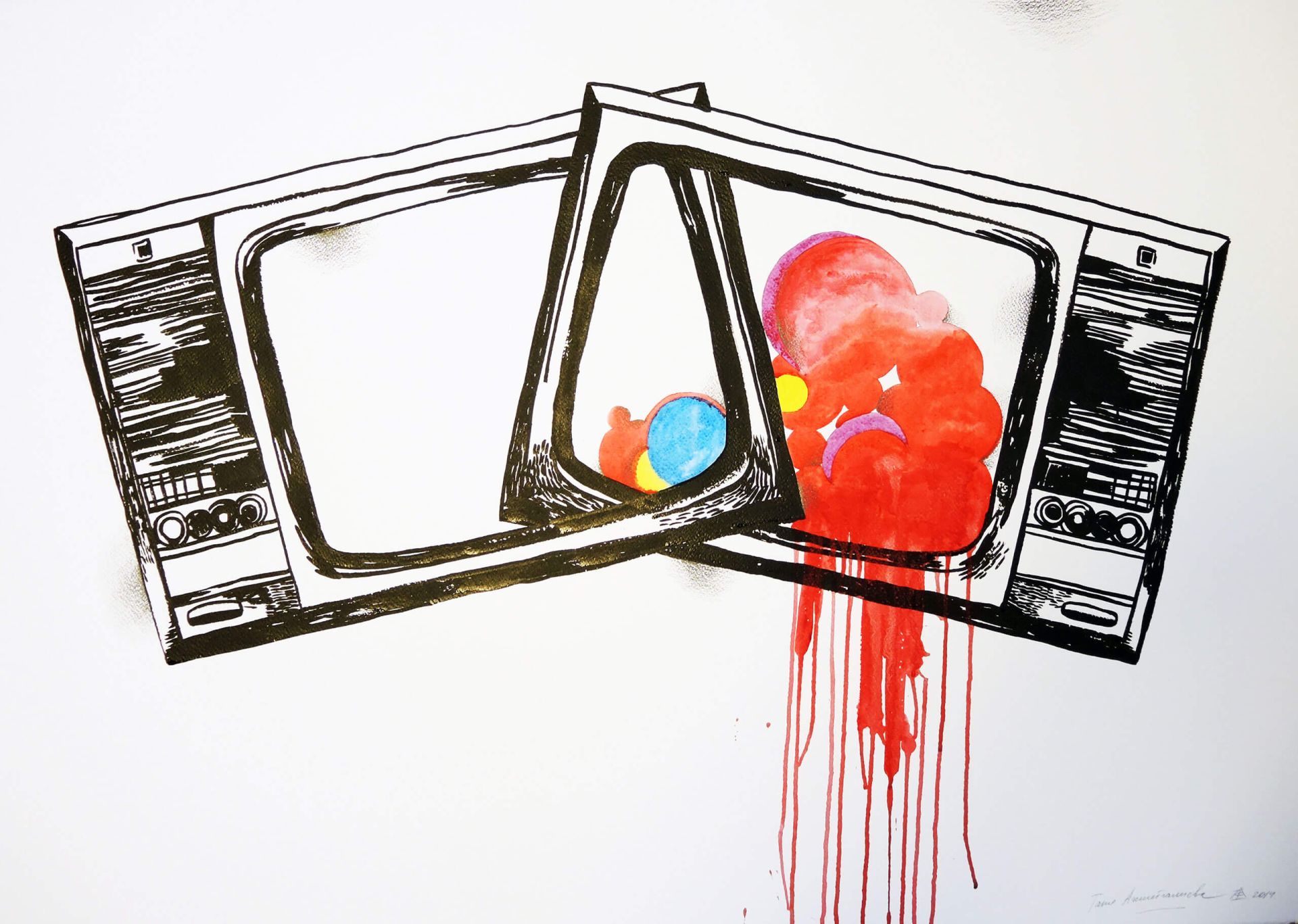
Where can I hide? 2014, 100 x 70 cm, watercolors on paper
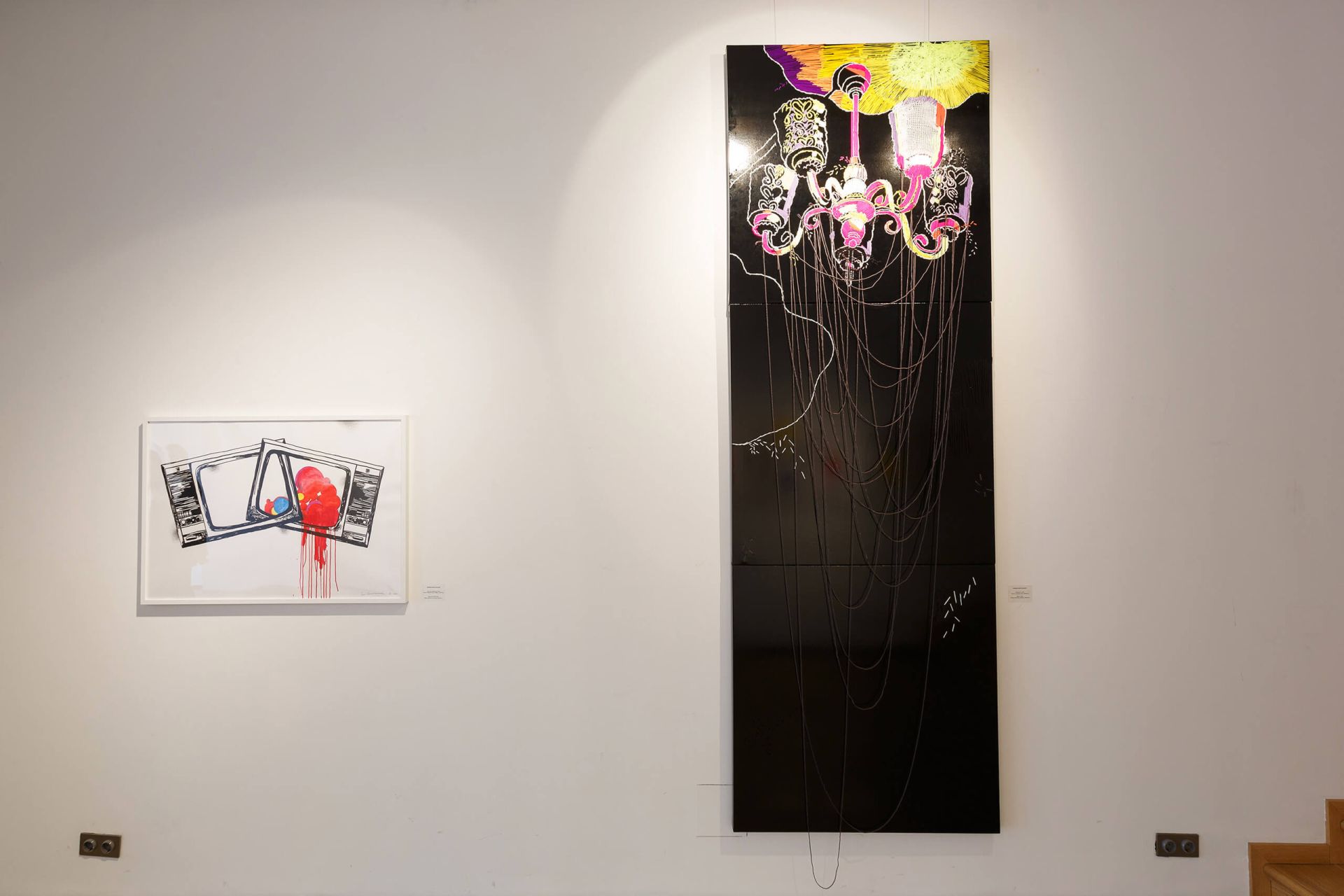
Flicker #2, 2014, 100 x 300 cm, textiles, sewing, threads
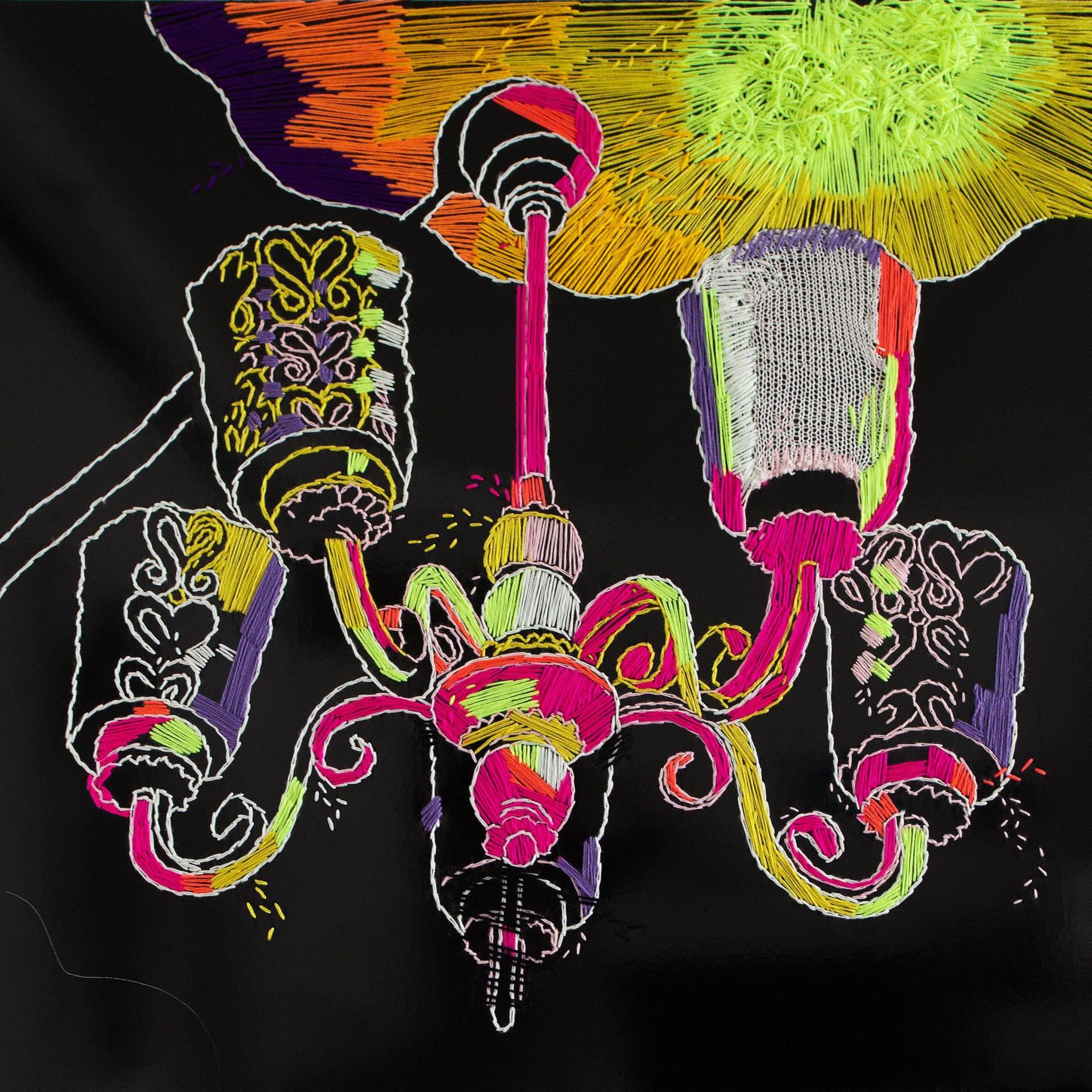
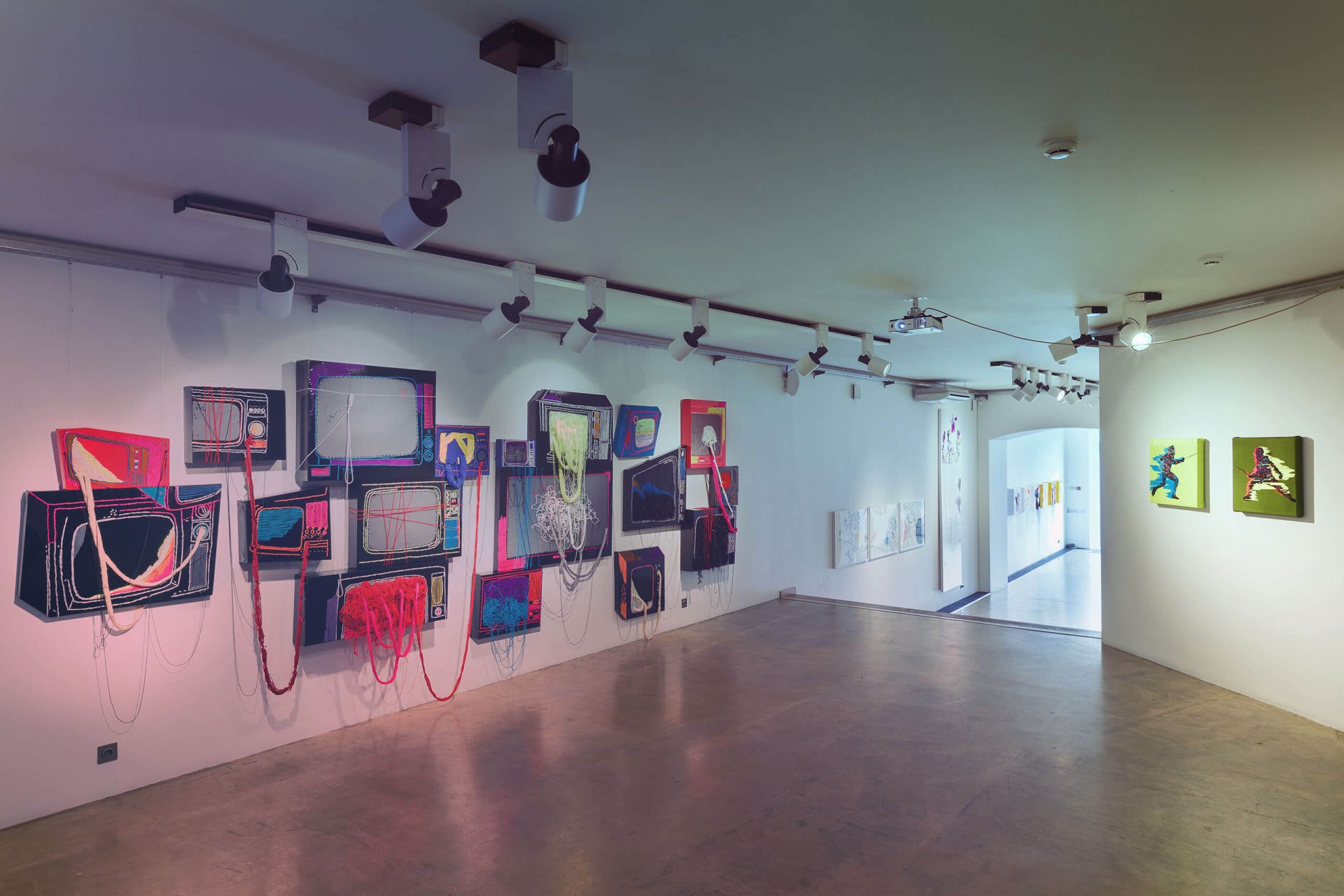
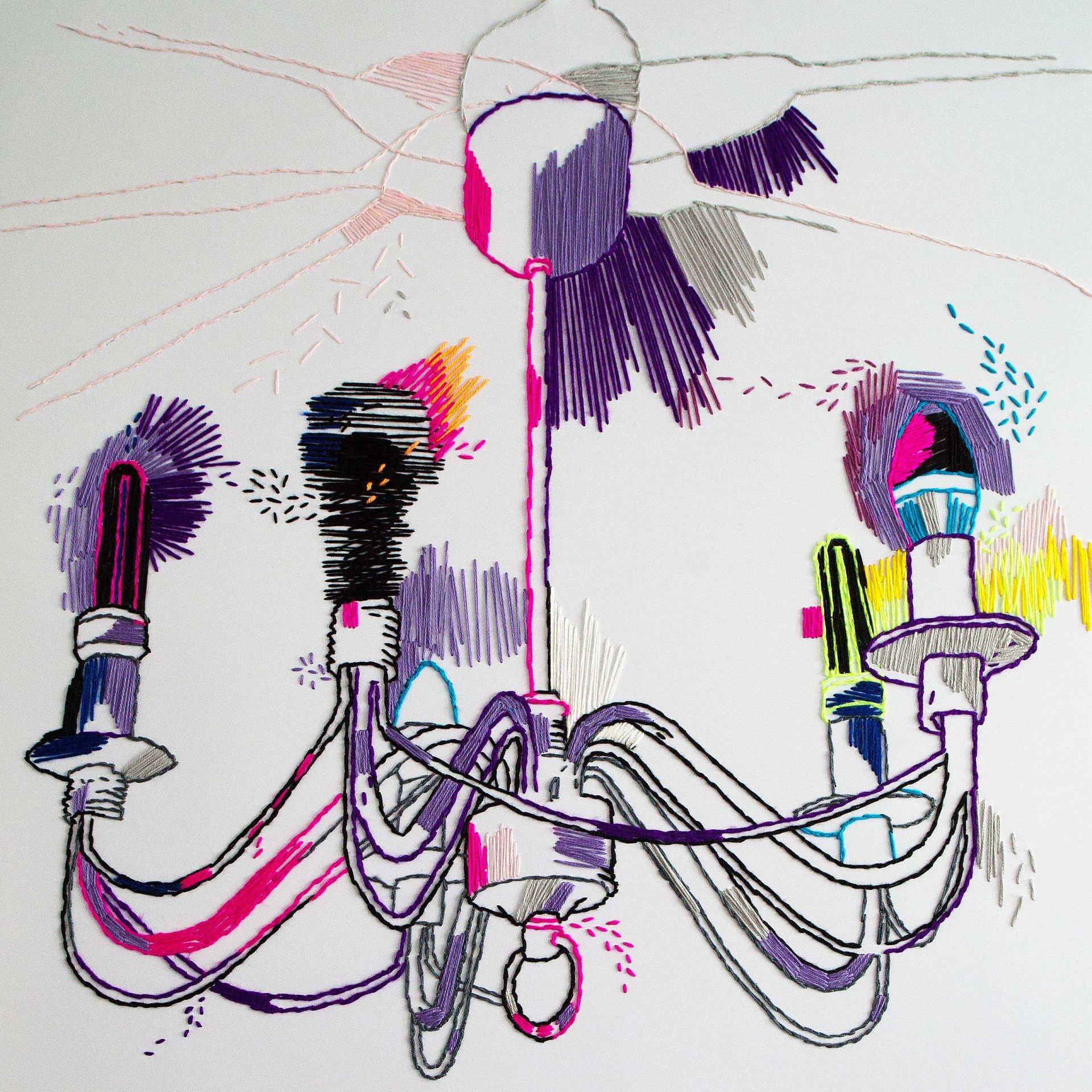
Flicker #3, 2014, 100 x 300 cm, textiles, sewing, threads
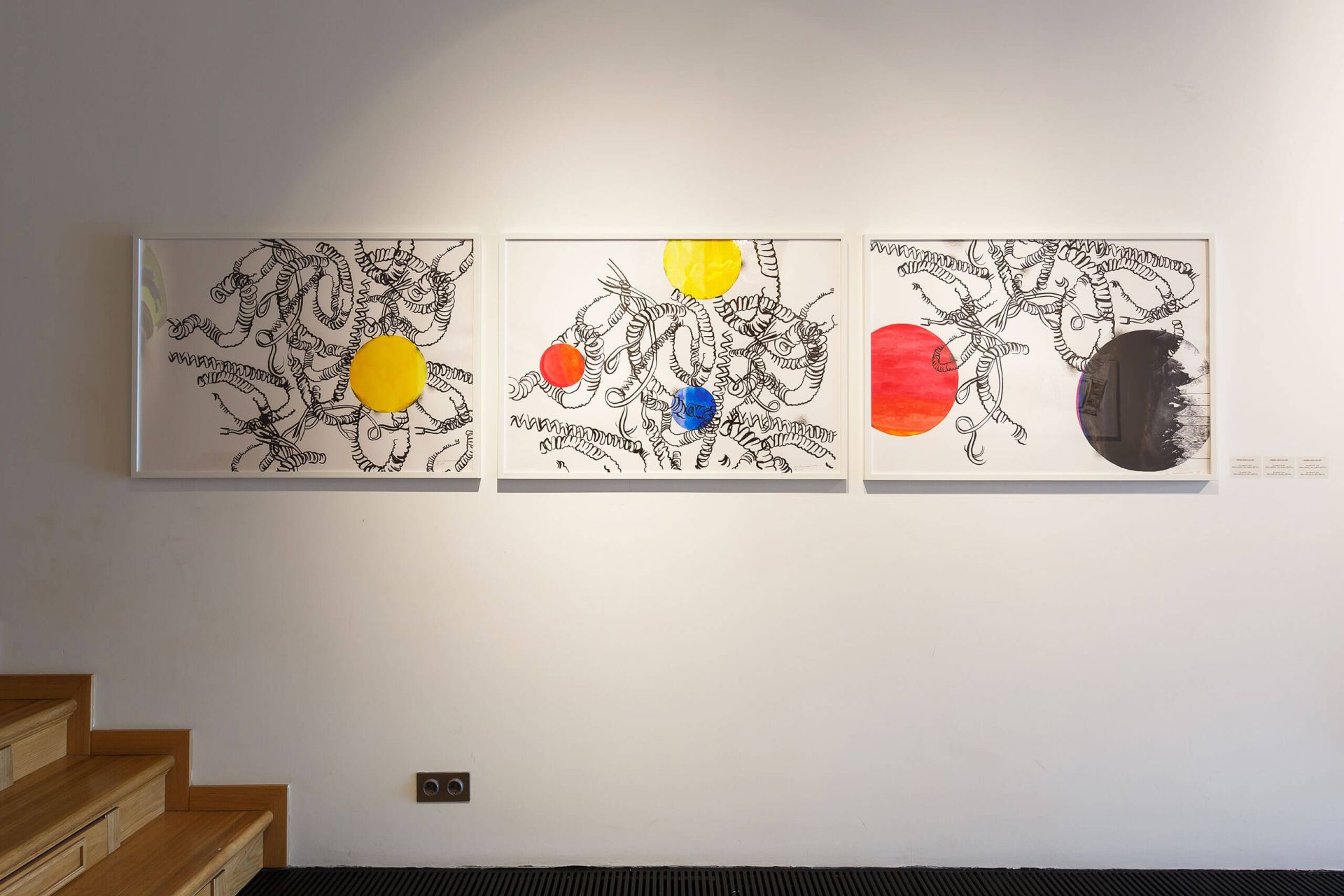
No recipient #1, #2, #3, 2014, 100 x 70 cm, watercolors on paper
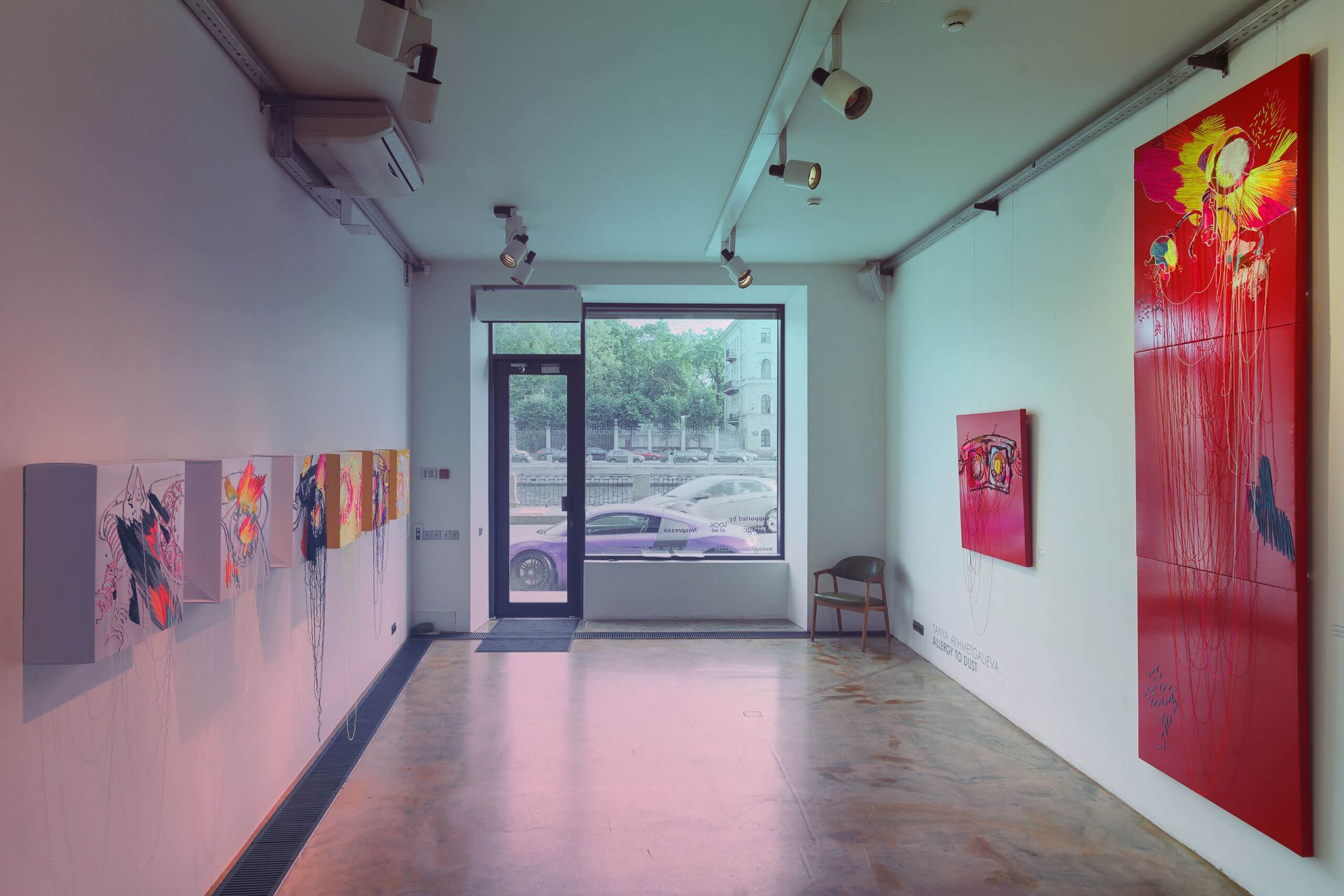
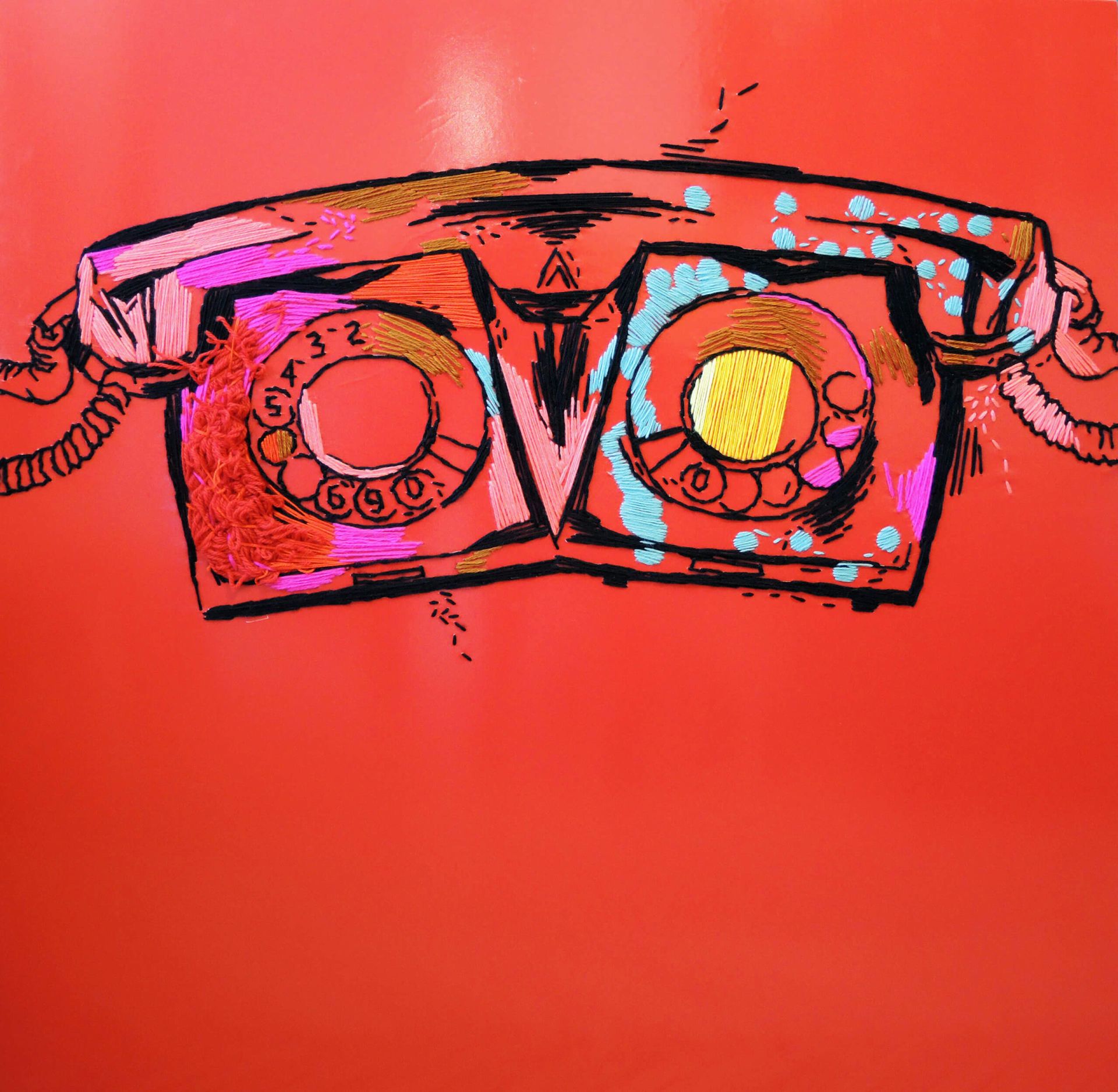
Red phone, 2014, 100 x 100 cm, textiles, sewing, threads
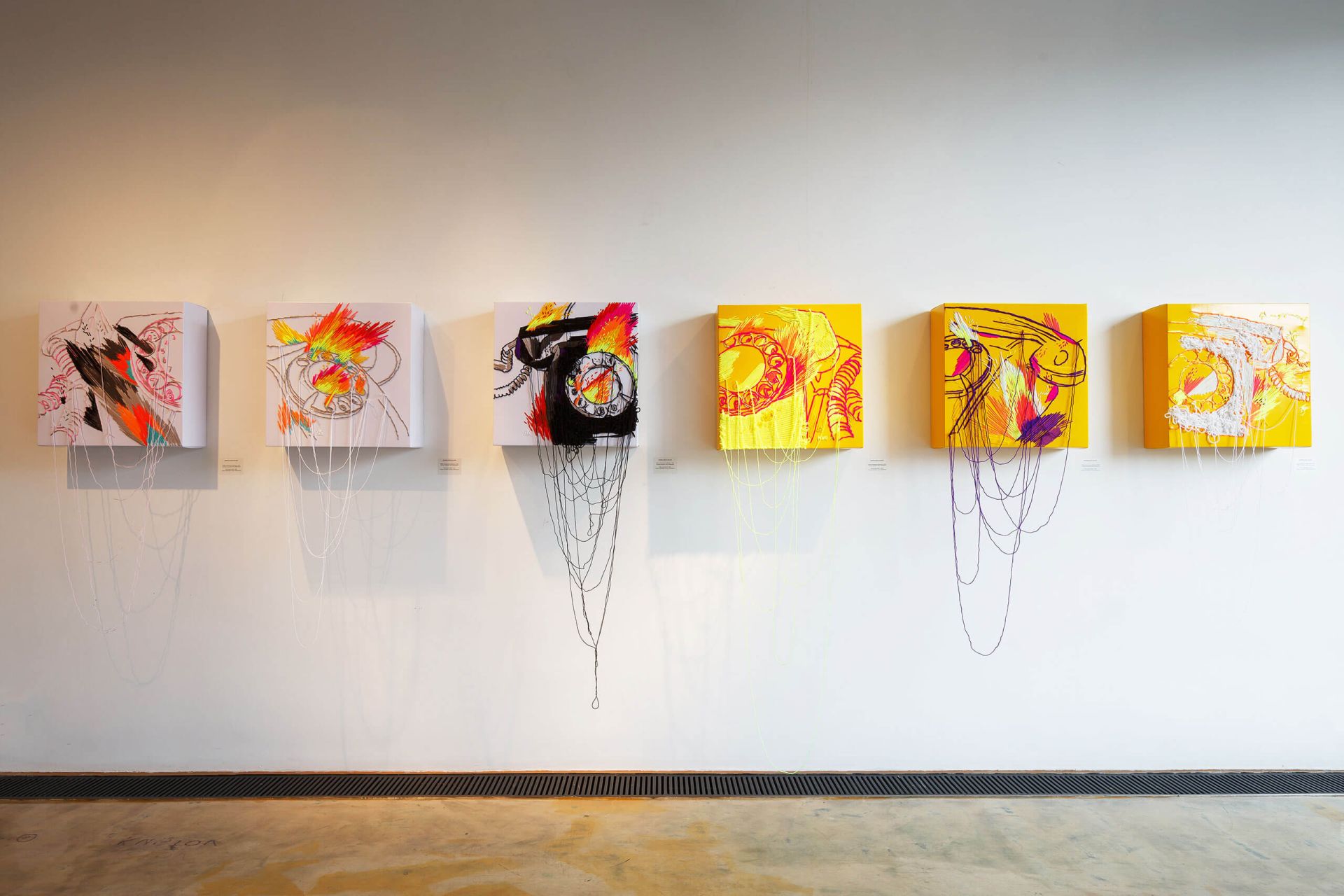
Delay action bomb #1, #2, #3, #4, #5, #6, 2014, 100 x 100 cm, textiles, sewing, threads
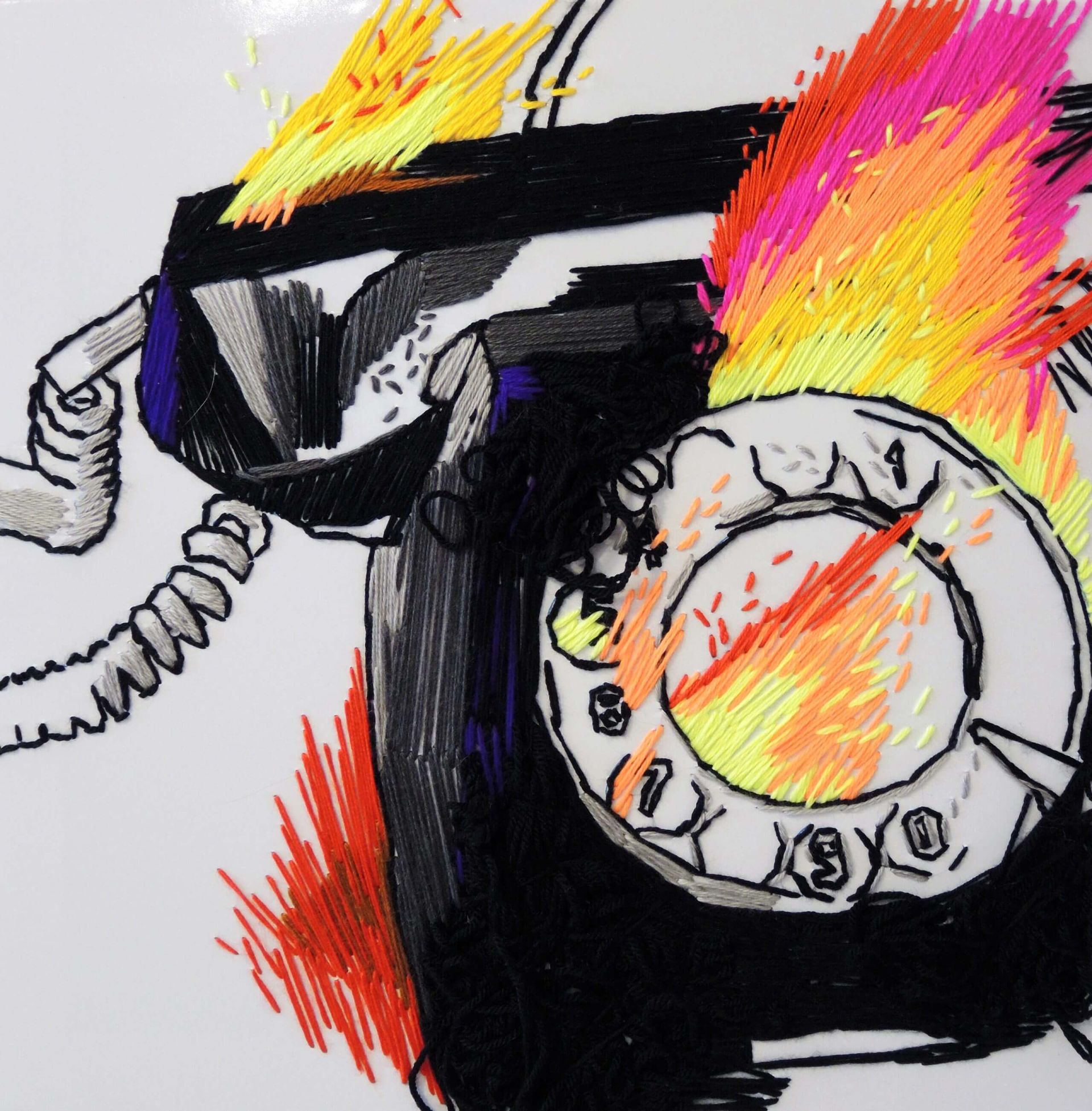
Delay action bomb #3, 2014, 100 x 100 cm, textiles, sewing, threads